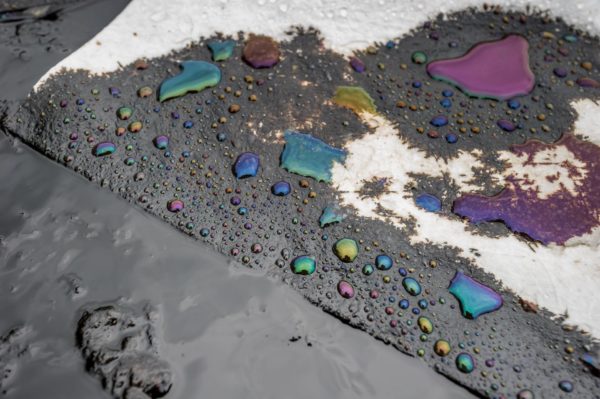Do vehicles that carry chemicals require a spill kit?
A spill kit is a kit of materials designed to absorb, neutralise and contain a small amount of spilled chemicals in order to stop them from causing environmental damage, for example, by entering waterways or soaking into the ground.
There are different spill kits for different types of spill, such as general purpose liquid chemicals, oils, hazardous chemical and biohazards. Standard spill kits can be purchased from stores and online and they come in a bag or plastic crate which should be secured within the vehicle.
There are three main ways that drivers carry chemicals:
- Small containers (anything from a single container through to many small containers, e.g. pallets of bottles of bleach)
- Medium containers (barrels, IBCs, etc, carrying from 50-1000 litres)
- Bulk containers (tankers carrying thousands of litres)
Spill kits in vehicles are only designed to deal with small spills of 20-30 litres. For larger spills, emergency services must be called and the driver must ensure that they don’t put themselves in danger; the idea with larger spills is to reduce the impact if it can’t necessarily be stopped.
What’s in a spill kit?
There are three categories of products in a spill kit:
- Personal protective equipment (PPE)
- Materials for absorption and containment
- Disposal items
Standard spill kits come with a basic amount of materials, but it is possible to add more absorbent materials and specialist products.
PPE
PPE is important when cleaning up hazardous items as, even when the spill has been absorbed, the materials used from the spill kit could still be toxic. PPE in a spill kit usually includes goggles or glasses, a face mask and gloves. Sometimes there will be some overalls or a coverall, boots, and a respirator.
Some kits come with danger tape so you can mark off an area. You may also want cones or barriers to mark out the spill.
Absorbent and containment material
These items must either absorb the spill or block it from moving anywhere else. Absorbent pads and socks plus granular absorbent materials such as mineral sponge are the most common items in a spill kit. Specialist products that could be added are booms and bunds, neutralising chemicals, drain cover, drum plug (putty) and absorbent pillows.

Disposal and cleanup items
The contaminated materials must be safely packaged and disposed of. A plastic brush and shovel, plastic bags, cable ties (or tape) and a hazard label are what’s required. You must dispose of this using a licenced contractor.
How do you know how to use a spill kit?
It’s recommended that you do a spill control course so that you understand safe spill management and cleanup. There will also be basic information contained within the kit, but it doesn’t usually give many examples of what you should do in a spill. Follow HSE guidelines for spill management.
Which drivers should carry a spill kit?
- Any driver carting small packages or containers of hazardous goods under ADR regulations
- Any driver who is using hazardous goods transported in their vehicle, for example, a pest controller with containers of pesticides
- Any driver carrying working for a company or in an area where carrying a spill kit is either a condition of the work or mandatory by law
- Any driver working in an area where chemicals are used, for example, mobile mechanics.
In most other scenarios a company will have spill kits in its building or where chemicals are stored.
Chemicals can be spilled completely inadvertently, for example, if a brake line fails or fuel is accidentally spilled when filling up.

When chemicals are spilled, the responsibility for the impact of those chemicals on the environment is down to the driver and the driver’s employer which is why it’s essential that drivers are trained and have the right spill management materials in their vehicle.
- Understanding the National Standards for Riding Mopeds and Motorcycles
- Livestock Transport Rules UK: A Complete Guide to Animal Transportation Requirements
- The Role of Safety Advisers in Dangerous Goods Transport
- Sustainable Driving: Reducing Your Environmental Impact on the Road
- Developing Effective Lesson Plans for Driver Training
- UK Agricultural Vehicle Registration and Tax Relief
- Challenges of Transporting Radioactive Materials (Class 7)
- Exemptions and support for Clean Air Zone charges
- Navigating Legal Requirements: The UK Motorcycle Licensing Rules
- Safe Transportation of Agricultural Chemicals and Hazardous Materials
- Innovations in Vehicle Construction for ADR Compliance
- Motorcycle Recovery Operations: How to Recovery a Broken Down Motorbike
- Alternative Fuels in Agricultural Vehicles
- Carriage of Dangerous Solids in Bulk Containers
- Understanding Limited Quantity Exemptions in ADR